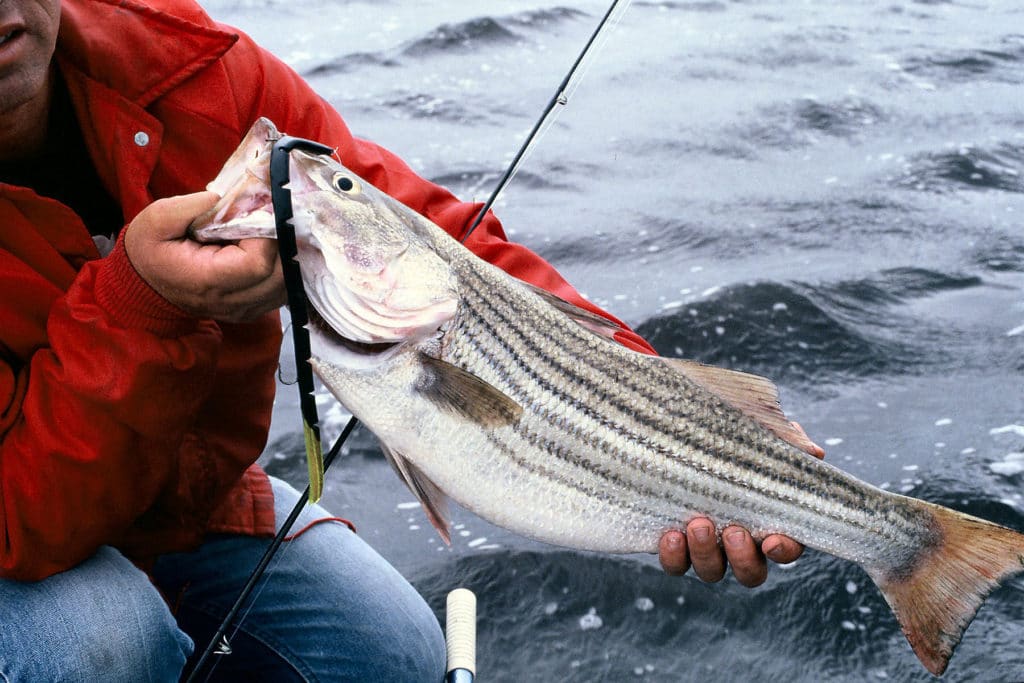
The autumn striper fishing season traditionally enjoyed by anglers will not open this year, reported the North Carolina Division of Marine Fisheries (NCDMF) on Sept. 26. Striped bass harvest cut-backs were mandated by the state following an updated 2021 stock assessment, says NCDMF.
The state made the move restricting angler harvest after NCDMF reviewed its 2021 Fishery Management Plan that revealed young striped bass recruitment to the region’s lineside population was lower than desired.
Despite striper harvest cutbacks in 2021 for the areas, the updated assessment revealed the Albemarle and Roanoke estuary bass numbers continued to decline as low numbers of young stripers joined the current population.
Bottom line for anglers is the state believes striped bass in the areas are overharvested and continue to be overfished. So to improve striper numbers, angling had to be halted for the 2022 autumn season.
The state’s striper management plan mandates a reduction in fish caught to improve striped bass numbers when necessary. The reduced total striper landings based on the updated stock assessment is 15,726 pounds of fish. That striper take is divided equally between recreational anglers and commercial fishermen in the Albemarle Sound and Roanoke River management areas, according to the NCDMF.
The area’s prior allowance of striped bass for 2022 was 51,216 pounds. Already this year the harvest from the Albemarle Sound and Roanoke River management areas is 35,520 pounds of stripers. Because that harvest number exceeds the updated stock assessment limit of 15,726 pounds, the autumn striped bass season in the areas will not take place to conserve the species and aid in juvenile fish recruitment to the population.
Further management options are being explored by the state, and will be discussed during a November meeting of the Marine Fisheries Commission.








